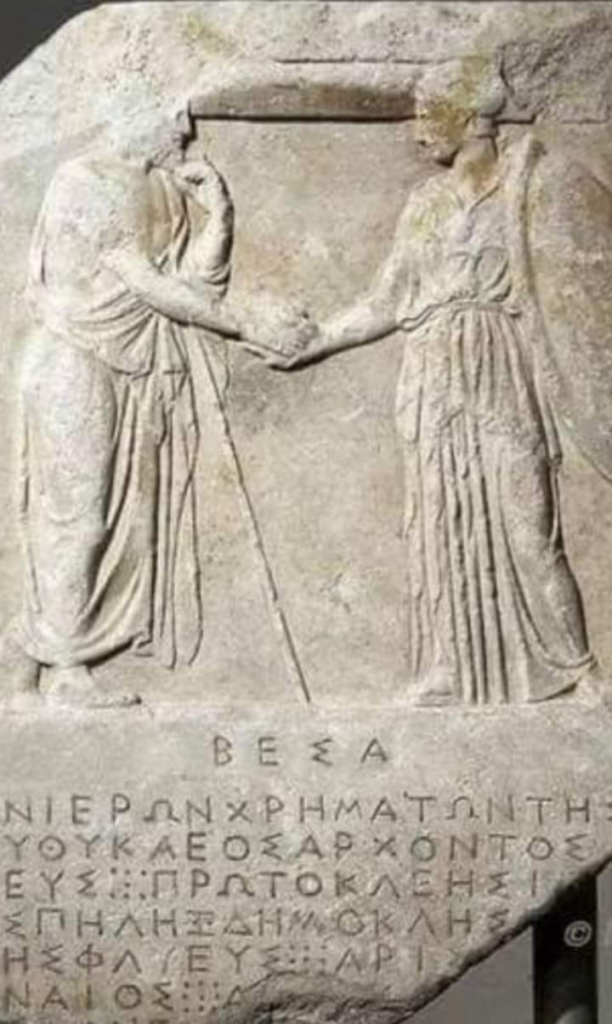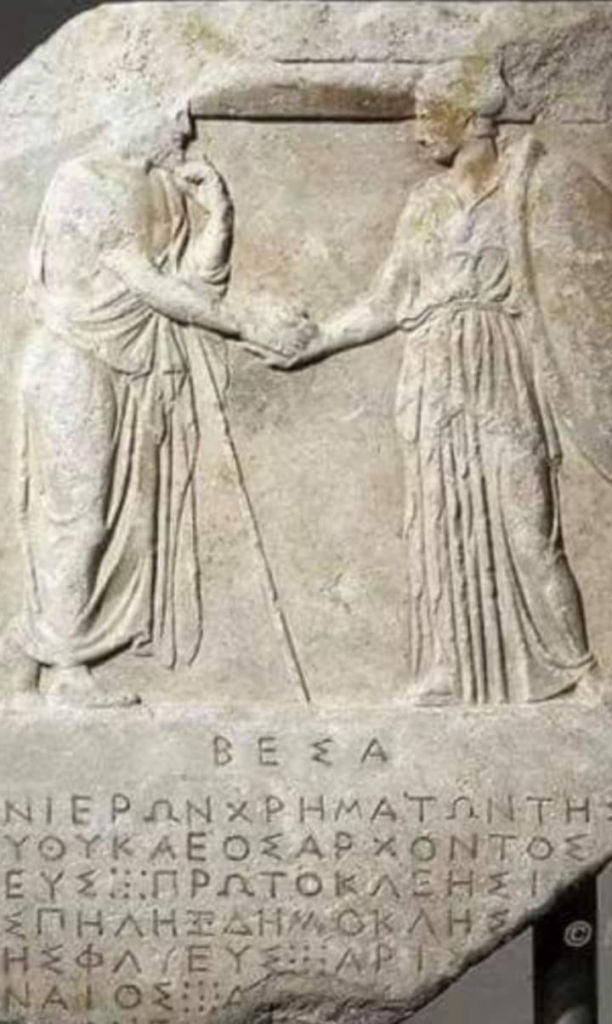Original article (in Albanian) was published on 04/10/2023; Author: Pustina Patris
A picture of an ancient bas-relief from Athens is making the rounds on Albanian-speaking social media platforms. In the image, the Albanian word “Besa” seems to be inscribed in Greek letters. However, a fact-check by “Faktoje” has confirmed that the image has been manipulated, and the original monument does not bear any such inscription.
———————————
A circulating image in Albanian-speaking online communities depicts what seems to be an ancient bas-relief with the word “BESA” inscribed on it. “Besa” is usually translated as “faith”, meaning “to keep the promise” and “word of honor”.

The image that is circulating on the Internet
This image has been making the rounds on Facebook pages with a patriotic focus or those dedicated to sharing content about the culture, traditions, and history of the Albanian people. Since at least 2019, these pages have enthusiastically shared the image, attempting to assert the ancient roots of the Albanian language and customs, particularly emphasizing the concept of honor code, or “besa”.
However, a search using the image search engine Google Reverse Image Search reveals that this image is, in fact, a manipulation.
The original bas-relief , which is located in the Acropolis Museum in Athens, does not contain the inscription “BESA”. The image circulating online has been altered and does not accurately represent the original artifact.

The original bas-relief
Discovered during 1876-1877 on the Acropolis, the stone stele bearing the carved bas-relief depicts the goddess Athena on the right, engaging in a handshake with a man whose identity remains a subject of debate. The inscription on the relief is written in the Attic alphabet and refers to the treasurers responsible for serving Athena and other gods in the years 398-397 BC. Thus, it has no connection to the concept of faith (honor code). The bas-relief is estimated to be dating back to 397-396 BCE.
The intentions of those who have been distributing this manipulated image as a document of the antiquity of Albanian customs are admirable. Hopefully, disproving its authenticity will redirect their efforts to researching and disseminating authentic documents.
While the intentions behind circulating this manipulated image to showcase the ancient roots of Albanian customs are commendable, hopefully disproving its authenticity will steer these efforts toward researching and disseminating authentic historical documents.
One such authentic example is the Statutes of Shkodra, a normative code governing Shkodra under Venetian rule from the early 14th century until the Ottoman conquest in 1479. This document, written in a Venetian dialect, has been studied by scholars (1, 2) who trace the Albanian concept of ‘besa’ to the uniquely Albanian word “besare.” Exploring and disseminating such verified documents can contribute significantly to understanding the historical depth of Albanian customs.
Faktoje has previously refuted claims (1, 2, 3) about Albanian history and antiquity as well.



